Agenda 21, also underway in Euskal Herria
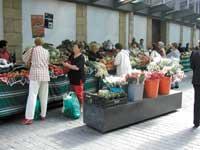
In each of the municipalities that have initiated the implementation of Agenda 21, the project has a different meaning, taking into account local resources and limitations. And it must be so, because in the world there are no two municipalities with the same problems.
Since the three pillars of the Agenda 21 program are environmental integration, citizen participation and the continuity of the process, governments have organized procedures that can respond to the three. Citizen participation is considered important, since it is a special action of democracy, since instead of traditional political representatives making all decisions, the Agenda 21 program proposes a degree of involvement of all citizens through participation.
In the Autonomous Community of the Basque Country


In Álava, Gipuzkoa and Bizkaia, the program has been promoted mainly by the Department of Spatial Planning and Environment of the Basque Government, with the collaboration of entities that have been working for some time and that have wanted to participate in each municipality.
In the Autonomous Community of the Basque Country, the Agenda 21 programme has not been implemented jointly. The strategy of the Basque Government was initially to rehearse with some municipalities and then, with its experience, expand it to others. The participants in this second step are organized in municipal groups of the same region.
The first step began with a small number of municipalities that were developing different projects outside the Agenda 21 program in line with sustainability or, at least, environmental protection, so in some cases they only had to adapt 'old' projects to the new program.
Officially, the municipalities that have held the first sessions are members of the Udalsarea 21 Network. In total there are sixteen municipalities: three in Alava, eight in Gipuzkoa and five in Bizkaia. It was created in December 2002, at an event held in Vitoria-Gasteiz.
Following the experience of these sixteen municipalities, the Agenda 21 programme was launched elsewhere. In this case, by the hand of the group organization, many others participated in the program. Therefore, having a different starting point, the strategy of these municipal groups was different from the previous ones. The groups met by counties to jointly develop the plan, and so it has been working since.

On the one hand, all the peoples of an area face problems related to this territory, so they can be diagnosed and treated collectively. In addition, the group can offer economic support and resources to all its members, so that smaller municipalities can also participate in all projects in this region.
This idea has brought together different municipalities in groups and have begun the first steps of the Agenda 21 program. On the other hand, all groups have met in a second network called Udaltalde 21 to work on sustainability.
There are already ten groups that have joined the Udaltalde 21 network, six in Bizkaia and four in Gipuzkoa. Although in a group there are very different municipalities, the whole region receives the advantages of the association.
By the hand of Udalsarea 21 and the associations Udaltalde 21, the planning of the Local Agenda 21 has been carried out in many municipalities. However, they have only begun the journey, since in most cases the diagnosis is being made or are in the first steps. It is not an easy task, because sustainability is not only the protection of the environment, but it is necessary to analyze many areas in each place, including those that are economically relevant. In addition, there are many municipalities that have not started the plan. For those who are missing to join little by little, it is necessary to facilitate the path and for this it takes time.

However, although the objective is very broad, municipalities can analyze sustainability by areas, for which they have begun to work in the areas that are considered most important in the current situation. From there the program will expand over time.
Navarra
In Navarre the Agenda 21 programme has long been implemented. In fact, the Government of Navarra recognized in 1998 the possibility of establishing innovative objectives in key to sustainability and undertook its work in many municipalities.

Four years before the Government took this decision, in 1994, many European municipalities signed the Aalborg Charter, a pact that defines the strategy to make cities sustainable. Among the signatories were more than 50 municipalities of Navarra and two communities.
In support of the program, the Government developed administrative support through Decree 93/98. From there, each municipality has had to approve in its municipality the corresponding program of Local Agenda 21.
In general, the government's strategy is to lead the first diagnosis. Once the diagnosis is completed, each municipality must develop an appropriate action plan within its Local Agenda 21. On the other hand, the Government reviews annually the situation of each City Council, in order to facilitate its follow-up and facilitate economic support for actions that can be carried out.
The initial diagnosis is known as sustainability audit, a concept in which we wanted to integrate not only the environment, but everything related to sustainability.
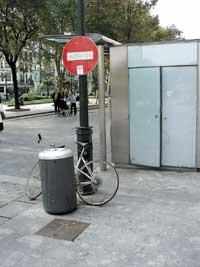
An important feature of Navarre is the size of the municipalities. Most are less than 4,000 inhabitants, only 18 are older. Therefore, the main economic resources of the Navarrese peoples are of the primary sector. As this sector descends, Pamplona and its surroundings are growing, as small towns do not offer many other options.
There are many municipalities that have launched Local Agenda 21 programs in Navarra. And as in the Autonomous Community of the Basque Country, some municipalities of the same commonwealth have grouped together in groups to jointly develop the plan.
Pamplona, Tafalla and Cintruénigo have pioneered the implementation of the Agenda 21 programme.
Among these three, highlights Cintruénigo, which has given a sustainable solution to waste from its main industry. The Cintruenigon alabaster industry has been dominant for years. However, this industry generates very high amounts of alabaster powder and the accumulation of these waste has been a serious problem in the municipality.
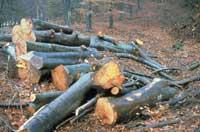
However, a plaster industry has been installed that uses these waste alongside the alabaster industry. In the new industry plaster is made from dust. Finally, the water vapor generated by the new industry instead of emitting into the atmosphere is used to heat sports facilities. This example has left open in Cintruénigo the path of sustainability pursued by the Agenda 21 programme.
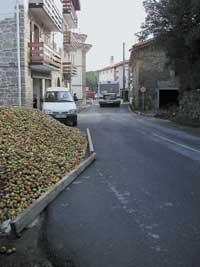
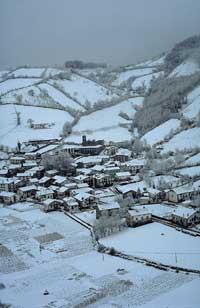
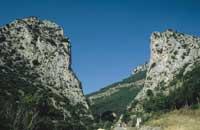

Ecological footprint What terrain do we need to maintain our lives? Do the calculation and the result is an ecological footprint. Each can do the calculation with the data of his life, it can also be done by territories. This requires quantifying all ecological resources, including natural resources. If in a territory what produces the land is sufficient to maintain the way of life of the people who inhabit it, we can consider life in that territory as sustainable. Calculating the ecological footprints of Euskal Herria and Western peoples in general, it is clear that to be sustainable we have to change many things. |
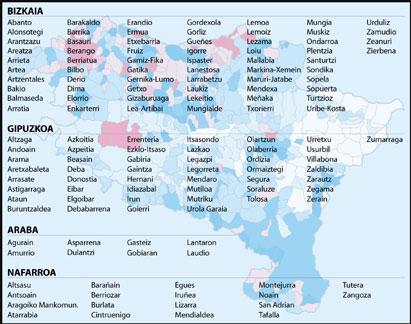
Ezkio-Itsaso
Goierri guipuzcoano, 54 kilometers from Donostia-San Sebastián, with 21 square kilometers of surface, 568 inhabitants.

In October 2002 the agreement for the constitution of Udaltalde 21 Urola Garaia was signed. This agreement includes the municipalities of Ezkio-Itsaso, Legazpi, Urretxu and Zumarraga. It is therefore about applying the principle of sustainability to the region without losing the municipal vision.
Before the signing of this agreement, each municipality had traveled its way. The City of Legazpi began in June 1998 and the rest in December 2001. As for Agenda 21, Legazpi is more advanced than the other municipalities. However, being a smaller municipality and recently constituted, the case of Ezkio-Itsaso could be more relevant.
Ezkio-Itsaso signed in April 2002 the Aalborg Charter, which proclaims its commitment to sustainable development. From then on, began the two main steps of the process of Local Agenda 21: on the one hand, the realization of a diagnosis or photograph of the current situation of the municipality and on the other, the design of an action plan to help build the future of the municipality.
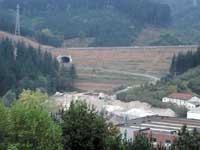
The diagnosis has already been completed and work has begun on the action plan. The diagnosis, the photograph of the municipality, has been more of a surprise for the neighbors of Ezkio-Itsaso. According to this diagnosis, the main challenge of Ezkio-Itsaso today is that young people remain in the village. In fact, until the 1980s Ezkio-Itsaso lost population.
From these years, the population evolved to higher levels, reaching 568 current. The increase in the population of this municipality is due to housing promotion, not employment. However, there are difficulties for young people to remain in the village: on the one hand, the inability to access a house at a decent price and, on the other, the economic infeasibility of the hamlet and the decline of agriculture.
The fact that Ezkio and Itsaso have a unique structure administratively does not seem to have had much influence. In fact, the efforts of concentration have failed to awaken the feeling of a single people. The organization of the school service has to do with this situation. The children of the town do not have between 0 and 3 services in the municipality, and the elderly are separated from the young: some to Zumarraga and others to Ormaiztegi. Therefore, from very small dispersion.
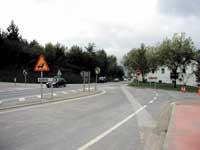
According to the diagnosis made, the regression that is taking place in the use of Basque has also generated concern and the need to respond with appropriate actions has emerged. The reasons are two: the indifference of the Basques and the proliferation of immigrants.
The main point of view of Agenda 21 is the environment, with which most people relate sustainability, where Ezkio-Itsaso has many problems, more than expected, since the poor state of the water supply network causes huge water losses. It is claimed that 49.8% of the water used is not accounted for. Garbage production continues to increase, up to 500 grams per inhabitant per day.
On the other hand, soil management problems are not joking, especially if you take into account those that come from higher planning. These include the TAV project and the area envisaged by the PTP for industrial implementations that may question the future reserve of the municipality's soil.
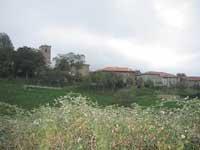
The photo of Ezkio-Itsaso has more components, but the main ones are those mentioned. The photo is now being studied well to approve and prioritize the action plan soon. Therefore, it is expected that next year a series of actions will be launched to make the future more intense.
Alonsotegi
Bizkaia, next to Barakaldo and very close to Bilbao, with an area of 20 square kilometers. 2,700 inhabitants.
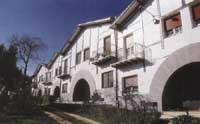
This municipality has been working since 1999 with Agenda 21. In fact, after the children's campaign on the general situation in Alonsotegi, it was decided that Agenda 21 was the best way to build infrastructure, protect the environment and promote citizen participation. The following year, in addition to the signing of the Charter of Aalborg, the Environmental Quality Audit of the municipality was carried out. To determine the needs and priorities of the municipality was analyzed water management, waste, noise, activity licenses, housing, etc. The study identified the strengths and weaknesses of the municipality in different areas.
For example, one of these areas has been the management and organization of the City Council. It is evident that when making decisions the City Council has an attitude of environmentalization, but at the same time has little staff and resources to deal with environmental issues that may be in your hand. The diagnosis made in Alonsotegi also includes a series of topics related to the Cadagua River. In fact, the City has a project to channel and recover the environment, a plan to identify uncontrolled landfills and recover degraded soils. The river itself, however, can be a focus of risk for floods and large projects such as the Cadagua corridor will be a change of use of many soils. The analysis carried out in this municipality includes excessive water consumption, incidents in the selective collection of waste, pollution and noise.
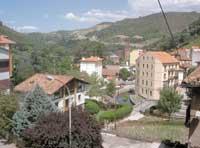
Once the study was completed, new steps were taken in the process. The main step was to design an action plan based on the diagnosis, taking into account the initial situation of the municipality and based on the principles of sustainability, define an action strategy. Thus, in 2002 10 programs were launched to improve the situation of the municipality with specific objectives and actions. Along with the definition of the Strategy, sustainability indicators were selected to assess the evolution of the environmental situation in Alonsotegi. These aim to verify the effectiveness of the measures adopted, to monitor the process.
For example, one of the programs is to improve the level of pollution of the Cadagua River and the streams. Over the years, the Cadagua River has collected all waste from factories and homes. Although in recent years the situation has improved significantly, many untreated waters still go to the river. To solve this problem, the Water Consortium is working on the collector project that will lead the dirty water to the Galindo treatment plant. In this specific program of improvement of the situation the following objectives have been set:
Alonsotegi:
- Reduction of water consumption until reaching 290 liters daily and per inhabitant, exceeding 450 liters daily. This will be followed by household water consumption, with consumption being the clearest indicator.
- Improvement of the sanitation network and sending water to the treatment plant of all the houses of the municipality. To achieve this goal, a leak detection and control plan has been implemented. To verify that they are approaching the target, the number of homes that send water to the treatment plants should be taken into account.
- Control the discharges of the workshops and ensure that all of them are authorized. To do this, analysis of the waters of rivers and streams will be carried out, indicating the number of companies authorized to perform the discharges the situation.
- Water quality control in rural areas and springs. To guarantee the quality a collector will be built that will be indicated by the analyses carried out in the springs.
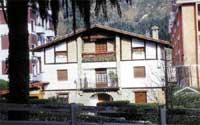
As a program to improve the degree of pollution of rivers and streams, nine others have been launched in Alonsotegi, some of them directly related to the environment, but there are others, such as education or well-being, that are unrelated, since sustainability is more than the environment.
Vitoria-Gasteiz
Alava capital; 225,000 inhabitants

As in other cities, Vitoria-Gasteiz is working on Agenda 21. It is also the first city in the state to launch this initiative. The process has taken into account pollution, transport, water, energy, workshops, waste, environmental education of the population, etc. as in other cities. One of the peculiarities of the Vitoria-Gasteiz Agenda 21 Plan is that: Green ring.
The Green Ring is a natural lung formed by the parks and green areas of Vitoria-Gasteiz and its surroundings, an intermediate landscape from the urban area to rural areas. The forests of Armentia, the forest park of Zabalgana, the environment of Olarizu and the park of Salburua surround the capital. Alongside them, urban parks must be taken into account: Florida, Prado, Arriaga, Gamarra, Judimendi and San Martín. To this day they are not yet interrelated, but for the future it is about connecting all these natural spaces.

Armentia forest in the
southwest of the city, with 1,650,000 square meters of quejigo. This park naturally collects the Green Ring and the Vitoria Mountains. It is fully signposted, has rest areas and fountains and is the place of residence of numerous animals such as birds of prey, charcoal, squirrels and foxes.
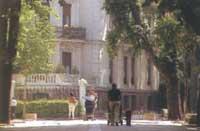
Olarizu Park
is surrounded by rural grounds. Being located to the south of the city, climbing to the top of Olarizu, offers in Vitoria-Gasteiz a magnificent panoramic view of the Alavesa Plain and the surrounding mountains. The park has an area of 310,000 square meters and consists mainly of meadows and orchards. The park also has an arboretum, a glass nursery with native vegetation, where you can see flowers and organic orchards.

Salburua Park is one of the most important wetlands in the Basque Country. To the east of Vitoria-Gasteiz you can take a seven-kilometre tour of the Salburua ponds. As in most wetlands, the 1,610,000 square meters of Salburua Park house a rich fauna and flora: ducks, herons, deer, European minks, poplars, oaks, lilies, carrizales, etc.
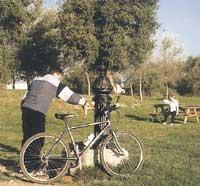
Zabalgana Park
Thenatural area of Zabalgana consists of meadows, ponds and forests of quejigo. Located to the west of the city, surrounded by rural land, it occupies 890.000 square meters. It is an ideal ecological refuge for native flora and fauna.





